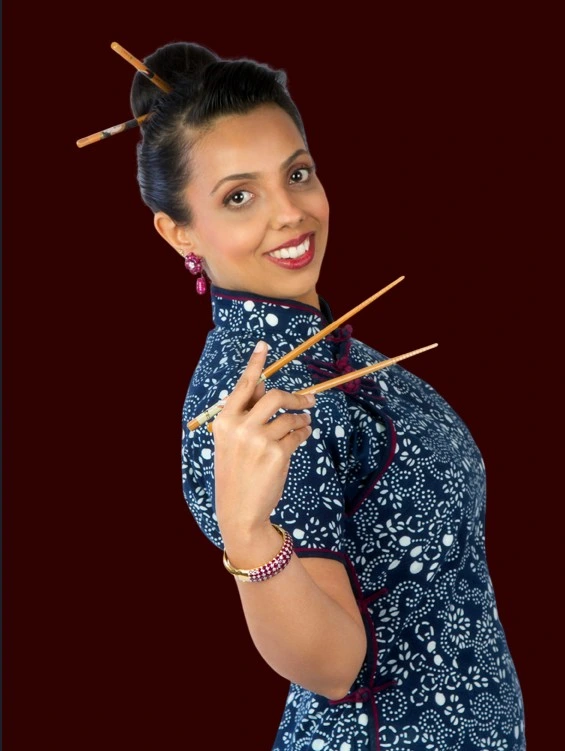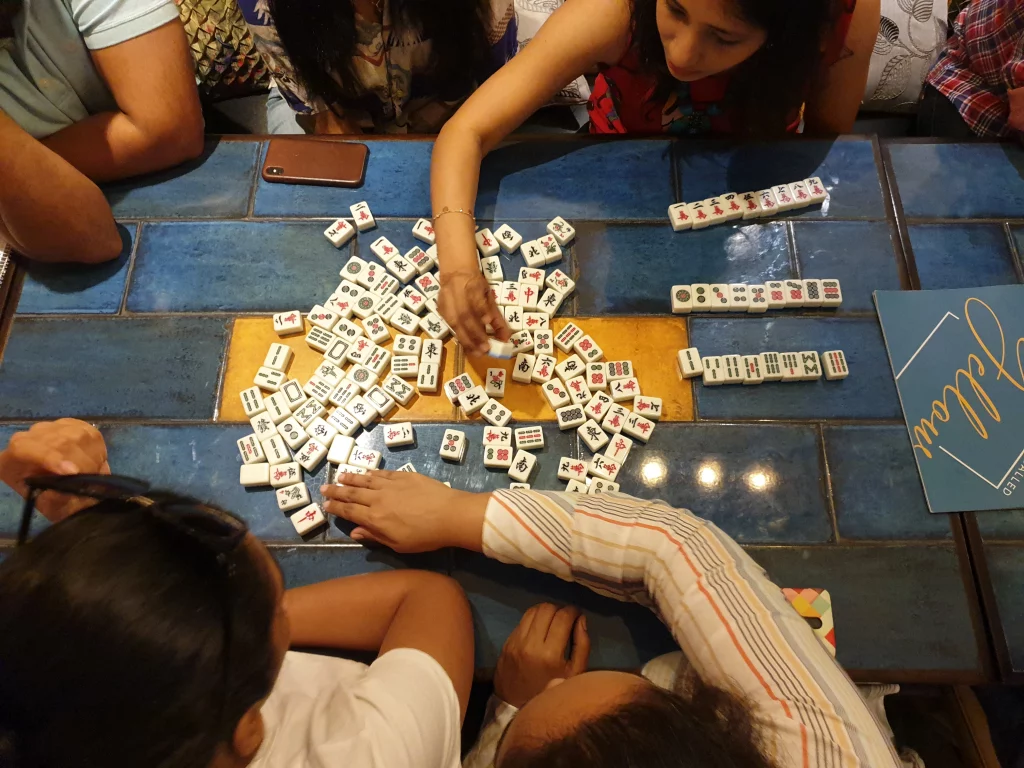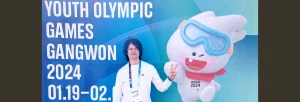(November 15, 2025) The present thaw between India and China seems to be unfolding against a backdrop of heavy tariffs imposed by the Trump administration on both nations. While individuals like Nazia Vasi have been quietly building a different kind of bridge based not in geopolitics but in language, culture and human connection. “If the people of India and China could talk to each other, they would be able to trust each other better. It’s as simple as that,” she remarks in a chat with Global Indian, distilling the philosophy that guides her work.
Based in Mumbai, Nazia is the Founder and CEO of Inchin Closer, a premium India–China language and cultural institute that has been teaching Conversational Mandarin for 15 years. “I’ve seen how even a few words in the right tone can open doors,” she remarks. As the Chinese language and culture coach for multinationals and individuals, she has helped thousands of professionals, students and entrepreneurs build a direct line to China through everyday conversation and cultural understanding.
Operational since January 1, 2010, Inchin Closer has grown into one of the leading Mandarin institutes for professionals, entrepreneurs and students. It has trained more than 2,300 learners from corporate executives to university applicants to globally mobile professionals who have passed through its classrooms, both physical and virtual. Its courses are powered by a customized curriculum, native Chinese teachers, an AI-enabled mobile app for continuous practice and even a jobs portal for China-linked opportunities.

Nazia Vasi
From newsroom to language training
Nazia’s journey to Mandarin began in a Mumbai newsroom. An Economics honours graduate from St. Xavier’s College, Mumbai, she joined The Times of India as a business reporter and became one of its youngest correspondents. “I used to cover business, IT, technology and telecom,” she recalls.
In 2004–2005, as she tracked India’s boom, she kept meeting Indian professionals who had either already set up a factory or were looking at setting up a factory in china. “It got me curious about what it was in China that everybody wanted to go there first and then come to India, and why we were constantly comparing ourselves to China.” Her curiosity ultimately became a one-way ticket.
A one-way ticket to Shanghai
Nazia decided she had to live in China, not just report on it. At 24, she left the safety of the newsroom for Shanghai. “I didn’t want to go as a correspondent,” she says. “I wanted to live in a big city, work, and support myself on my own two feet.”
She qualified as an English teacher through the British Council’s CELTA course and chose Shanghai deliberately to tread from “one commercial capital to another”. She arrived just as the city was gearing up for the Olympics and World Expo, when Chinese students were hungry for English and foreign culture.
Her plan was to teach English by day and learn Mandarin from her students by night. “Even if we stepped outside class, the students wanted to speak in English,” she laughs talking about her Chinese students who were eager to learn the English language. “I never really got to speak Mandarin.” So she switched roles, enrolling at Fudan University to study Mandarin full-time and immersing herself for a year.
An Indian in China, and in the boardroom
After that year, her China story moved from campus to corporate. Nazia became India head of Dezan Shira & Company, an Asian tax and legal consultancy headquartered in Shanghai with operations in Vietnam and India.
“At that time, just being an Indian in China was a novelty,” she says. Most Indians were starting to arrive there as employees of firms like TCS or Infosys. By then she had lived in China for a year and a half, spoke basic Mandarin and understood the culture. “At 25 or 26, I was heading the India department and had Chinese lawyers and chartered accountants, much senior to me, on my team,” she remembers.
Chinese companies were only beginning to look at India as the next big market. Nazia juggled classes in the morning and client meetings after lunch until the 2009 financial crisis hit. As China slowed, she returned to Mumbai and spent the year consulting for those trying to understand China.
Meeting the ‘Chinese girl in Bombay’
Common friends kept telling her to meet “the Chinese girl in Bombay.” She was someone who had done the reverse journey. Wang Xiaojie, a native Chinese had studied at UWC, completed a double major in Economics and Environmental Studies at the University of Pennsylvania, and had moved to Mumbai to work in corporate strategy at Mahindra & Mahindra.
“We met through a lot of common friends,” Nazia says. “There were very few Indians in China and very few Chinese in India, so friends were always drawing those parallels.” Nazia explains that India’s Chinese presence has come in waves. Firstly there were early tradespeople in Calcutta, then entrepreneurs through Bombay’s Mazgaon port, and finally the recent wave of corporate professionals. The 1962 war and internments pushed many families to emigrate. “You don’t normally see Chinese people on the streets,” she says. “They might own a salon or a tailor shop, but you do not see them on the streets of Bombay.”
Against that backdrop, two young women in their mid-twenties; one Indian who had lived in China, one Chinese who had lived in India, stood out. Their skills clicked. Xiaojie, with an Ivy League and corporate strategy background; Nazia, by now an India–China interpreter–entrepreneur, with journalism, marketing and language training behind her. Together, they began mapping the gap between the two countries.

Wang Xiaojie and Nazia in China
From distrust to dialogue
They realized the gap was not just economic but emotional as well. “There was a huge gap where Indians did not trust the Chinese, and the Chinese did not trust India,” Nazia says. Indians repeated horror stories about Chinese food consisting of grasshoppers, snakes and cockroaches while Chinese companies were wary of India. Skirmishes led to calls to ban Chinese products. Travellers phoned from small Chinese towns, surviving on chips because they didn’t know where to find and how to order vegetarian food.
“We realised the whole concept of what China is was completely misrepresented,” she says. The core problem, they concluded, was communication. “If the people of India and China could talk to each other, they would be able to trust each other better,” Nazia says. “If you can speak each other’s languages directly, without an intermediary, I would trust you.” That insight took the form of Nazia’s company, Inchin Closer.
Building Inchin Closer through language and culture
In 2010, Nazia launched Inchin Closer, a premium India–China language and cultural institute. It was the only Mandarin institute co-created by an Indian and a Chinese who had both lived in each other’s countries. Its vision was to bridge the information gap between the two most dynamic countries of this generation; its mission, to help people communicate effectively, gain cultural insight and build trust.
Nazia drew on her CELTA training, her year at Fudan and her ties with the Chinese consulate in Mumbai to recruit native Chinese teachers and build an India-specific pedagogy. Xiaojie, who had lived and worked in India for four years, designed the first-level curriculum. “We took a lot of feedback from our initial students on what worked, what didn’t,” Nazia says. “And we created our own course material.” The curriculum follows the life of an Indian professional in China: ordering vegetarian food, bargaining in markets, navigating factory floors, negotiating payment terms, managing meetings and business etiquette.
Mandarin classes remain Inchin Closer’s core, but the institute now teaches in schools, colleges and companies, offers one-to-one classes for senior leaders, and handles interpretation and translation between Mandarin, English and Hindi. Over time, it has become the place people turn to for “anything and everything related to China.”
Although the early vision was of two women at the helm, the structure has settled with Nazia as Founder and CEO. Xiaojie, now back in China, is no longer formally part of the company but remains a close friend and advisor. Their combined experience across both countries still shapes every class and consultation.
The music of tones
One of the first things Nazia tells her students is that Mandarin cannot be treated like French or Spanish. It is tonal. “If I say ma with a flat tone, it means mother,” she explains. “If I say ma with a falling–rising tone, it means horse. If your tone is wrong, you could be calling your mother a horse.”
Because tone changes meaning, Inchin Closer insists on professional native Chinese teachers who can correct pronunciation and bring cultural nuance. Its courses follow the Confucius Institute curriculum, are aligned with HSK levels 1 to 6, boast a 100 percent success rate for students who appear for HSK, and are endorsed by the Chinese Consulate in Mumbai.
From Bombay classroom to global cohort
Starting as a Mumbai classroom, Inchin Closer is now largely online, connecting teachers and learners across time zones. The institute has taught more than 2,300 students comprising traders and entrepreneurs wanting to talk directly to suppliers, students using Mandarin as a powerful skill for university applications, homemakers and older professionals seeking a challenge, and C-drama fans eager to follow dialogue without subtitles.
More recently, Nazia sees Indians looking East rather than West, eyeing careers in Hong Kong, Singapore, and mainland China. “Their salaries are better. Then you need to know the language,” she says. “I see the shift. It’s more the drive to go East.”
To support this, Inchin Closer launched what it calls India’s first Mandarin app for its ten-year anniversary, built via a hackathon and powered by AI for daily practice. A jobs portal connects Mandarin-speaking talent to roles where their skills are valued.
Inchin Insights, and changing the conversation
Beyond the classroom, Inchin Closer also shapes how India and China talk about each other. Through its news and analysis platform, Inchin Insights, it publishes commentary on India–China developments written by Indians and Chinese who work between both nations. An online forum hosts discussion and collaboration, feeding real-world perspectives back into teaching.
Because its teachers are deeply rooted in Chinese culture, etiquette and contemporary life slip naturally into every module, right from how to bargain politely to how to behave at a business dinner. Language and culture are never separated.

A game of Mahjong, played by Inchin Closer students every Diwali
Talking past each other, or finally talking to each other
Through its certified Mandarin courses, cultural coaching, interpretation and translation services, Inchin Insights and global teaching network, Inchin Closer has become a natural address for students, business leaders and ordinary Indians who want to understand China beyond headlines.
For Nazia, now an India–China interpreter and entrepreneur who helps some of the biggest companies navigate this relationship, it all goes back to the insight that took her from a Mumbai newsroom to Shanghai’s streets. “If the people of India and China could talk to each other, they would be able to trust each other better,” she says. “It’s as simple as that.”
As fresh learners join Inchin Closer, including the incoming November 23 batch, the institute strengthens the slow, steady bridge between the two nations.
ALSO READ: Speaking of Belonging: How Indian languages shape diaspora identity across generations



